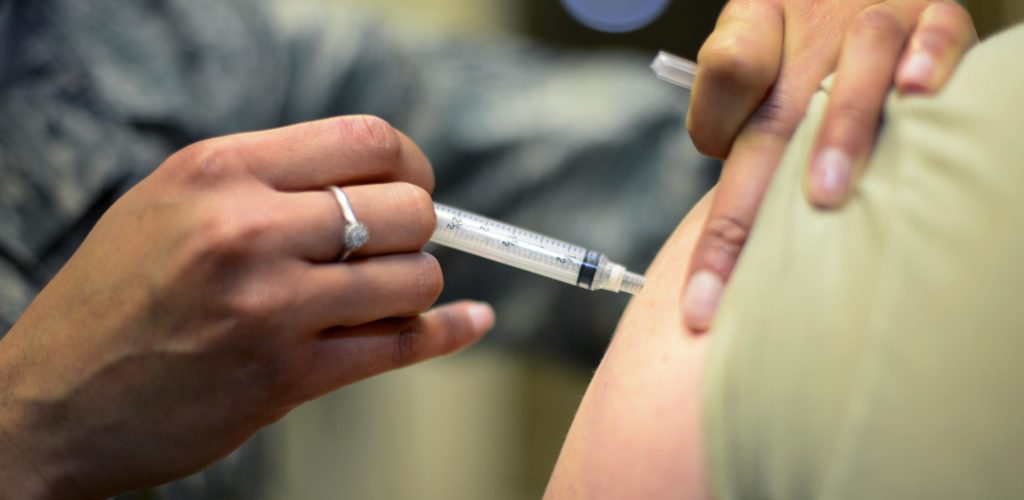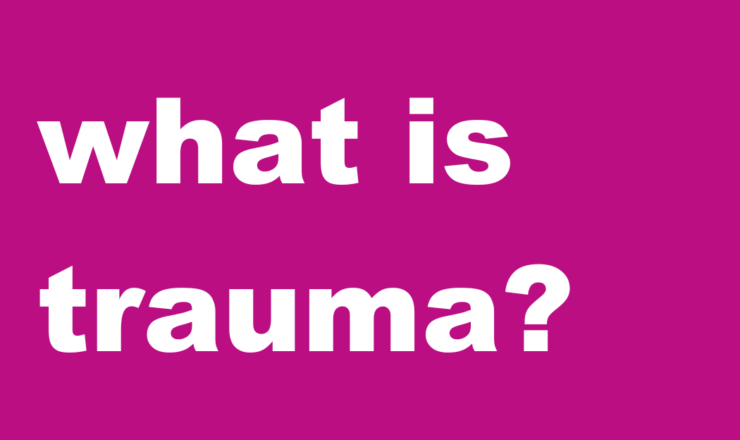HPV Vaccines
Human papilloma virus (HPV) is the most common sexually transmitted infection (STI) in the world. You may have heard that there are vaccines that can help prevent some strains of HPV. How do they work? Should you get one? Are they safe? Here is some information about HPV and the vaccines to help you decide if an HPV vaccine is right for you.
What is HPV?
- It is a virus transmitted through skin-to-skin contact, particularly genital skin-to-skin contact, with someone who already has HPV.
- There are over 100 strains (kinds) of HPV, around 40 of which affect the genital and anal (butt) area.
- Genital HPV infections are usually cleared up by the immune system on their own over time. However, when the virus is not cleared, it remains in the body and can cause health problems.
- Low-risk HPV can cause genital warts, which are little bumps that can grow on the penis*, anus (butthole) or on the outside and inside of the vagina* (see the HPV factsheet for more information).
- High-risk HPV can cause changes to cells in the cervix (the opening to the uterus), which can lead to cervical cancer. It can also lead to anal, penile, vulvar (the genital area outside the vagina) and oral cancers.
- The majority of people with HPV do not show any symptoms of HPV and most people don’t even know they have it.
- It is estimated that 75% of Canadians will get HPV at some point in their lives.
- See the HPV info page for more information [Link].
What are the vaccines?
There are 3 HPV vaccines available in Canada:
- Gardasil 9: This vaccine offers over 98% protection againt the 9 most common strains of HPV: 2 low-risk strains (that can cause genital warts) and 7 high-risk strains (that can lead to cervical and other cancers).
- Gardasil 4: This vaccine offers over 98% protection against the 4 most common strains of HPV: 2 low-risk strains (that can cause genital warts) and 2 high-risk strains (that can lead to cervical and other cancers).
- Cervarix: This vaccine offers over 98% protection against the 2 most common strains of high-risk HPV (that can lead to cervical and other cancers). It does not offer protection against any strains that cause genital warts.
- The vaccines trigger your immune system’s response to the virus. There is no way you can get HPV from getting an HPV vaccine.
- The vaccines are given by injection, usually in the upper arm.
- Depending on your age and the vaccine you choose, you may need 2 or 3 doses over a 6 month period. Your health care provider can clarify what’s recommended.
- While all the doses of the same vaccine are needed for it to be effective, if you miss/are late for a dose, talk to your clinician. You can usually get the remaining doses without having to start over.
- Studies show that the vaccines last for at least 5 years.
- The most common side effects of getting an HPV vaccine are a sore arm and redness or swelling at the site of injection.
- Less common side effects are fever, nausea, stomach upset and fainting shortly after the injection. The likelihood of having side effects is lower than with most other vaccines.
- No serious or life-threatening side effects of the vaccines have been documented.
- The vaccines do not treat any HPV you may already have (i.e., any existing genital warts or abnormal cervical cells).
- The base (adjuvant) of the Gardasil vaccine is aluminum hydroxyphosphate. The Cervarix vaccine is also aluminum based. Research has found that the quantities of the bases used in the vaccines are not harmful to people.
- The plunger used with Cervarix contains latex and may not be suitable for those with latex allergies. Gardasil 4 and Gardasil 9 are latex-free.
Who can get an HPV vaccine?
- In Canada, Gardasil 4 and Gardasil 9 are approved for people with cervixes** 9–45 years old and people with testicles** 9–26 years old. Cervarix is approved for people with cervixes** 9–45 years old.
- If you are interested in a vaccine but you don’t fit these categories, talk to your clinician.
- In Ontario, the Gardasil 4 vaccine is offered free of charge to people in Grade 7 in schools only (the cost is covered by OHIP).
- Toronto Public Health (TPH) has offered coverage for a few groups of people. Contact your health care provider or the TPH immunization info line (416-392-1250 or immunization@toronto.ca) to find out if you qualify.
- For everyone else, Gardasil 9 is about $180 per dose, Gardasil 4 is about $170 per dose and Cervarix is about $110 per dose. There may be more dispensing fees or taxes when bought at a pharmacy. You can only buy one dose at a time.
- The vaccines are covered by many insurance plans. You can ask your insurance provider if they are covered by your plan using the DIN (drug identification number). The DIN for Cervarix is 02342227, the DIN for Gardasil 4 is 02283190 and the DIN for Gardasil 9 is 02437058.
Should I get an HPV vaccine?
- It is important that you make an informed decision according to your own values.
- It’s suggested to get vaccinated before you become sexually active. However, the vaccines are still useful for people who are already sexually active. The likelihood that someone who is sexually active has already had all of the strains of HPV that the vaccines prevent is very low.
- If you are or may be pregnant, talk to your health care provider.
Where can I get an HPV vaccine?
- You need a prescription to get an HPV vaccine. You take the prescription to a pharmacy, buy the vaccine, and bring it back to your clinician to get the injection. You do this for each dose of the vaccine.
- If you are not going directly from the pharmacy to get the vaccine injected, talk to the pharmacist about storing the vaccine properly. Some clinics stock the vaccine onsite and some pharmacies can inject the vaccine at the pharmacy. Check with yours to find out.
- The Bay Centre for Birth Control (416-351-3700) has a Tuesday HPV vaccine clinic where you can buy and receive HPV vaccines.
How can you get tested for HPV?
- A clinician can tell if you have low-risk HPV (warts) by looking at any bumps you may have in and around your genitals and anus.
- A Pap test involves a small brush that sweeps the cervix to collect a sample of cells. The cells are then examined to see if there are any abnormalities caused by high-risk HPV.
- If you’re interested in testing for changes to the cells in your anus caused by high-risk HPV, check with your health care provider.
- There is currently no routine testing that detects changes in the cells caused by HPV inside the penis, mouth, or throat.
| More to Consider |
|
For a downloadable resource on this topic, please visit Planned Parenthood Toronto Factsheet Database.
If you have questions about this topic, feel free to contact one of our peer educators. [Link]
*We know that these aren’t the words everyone uses for their bodies (eg. trans folks), and support you using the language that feels best for you.
** People with cervixes are usually designated female at birth while people with testicles are usually designated male at birth. People with testicles don’t always identify as male and people with cervixes don’t always identify as female.
Last Edited: May 2020






